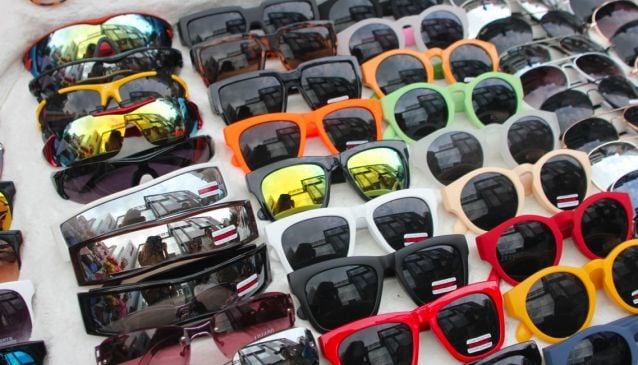Seoul for the Budget Traveler
Instead of shopping on the main strip in Gangnam, discover the hidden treasures below!
By Ryan Walters for My Guide Seoul
Embarking on a journey to Seoul doesn't have to be extravagant. While the city may initially appear as a metropolis of towering skyscrapers adorned with captivating neon signs, that doesn't mean you have to empty your pockets to enjoy Seoul.
There are numerous ways to immerse yourself in the city and absorb the essence of Korean culture without breaking the bank. So, set aside your Lonely Planet guide and read on for these enchanting, affordable activities for the budget-conscious traveler...

Once you arrive in Seoul, you'll undoubtedly want to dive into the culinary adventure that is Korean food.
While many would instinctively head towards Korean BBQ, which is undeniably a popular choice globally, there is another option that is quick, economical, and effortless: exploring one of the ubiquitous kimbap shops scattered throughout the city.
Kimbap shops offer what can be described as authentic Korean fare. These establishments serve as local havens for quick meals, so don't expect English menus or English-speaking staff. However, for those seeking an introduction to Korean cuisine, a kimbap shop offers an all-encompassing experience.
Renowned kimbap chains include Kimbap Cheonguk, Kim Ga Ne, and Kimbap Nara, although any local one will suffice. Look out for the characters "ê¹ë°¥" on storefronts.
Here's a brief overview of some of the menu items you'll encounter at a kimbap shop, along with their Hangul translations to assist you:
Kimbap (ê¹ë°¥): The Korean equivalent of a sandwich, kimbap combines rice and vegetables rolled in seaweed, resembling a sushi roll. A kimbap shop offers an array of kimbap variations, such as chamchi (tuna - ì°¸ì¹ê¹ë°¥), sogogi (beef - ìê³ ê¸°ê¹ë°¥), and kimchi kimbap (ê¹ì¹ê¹ë°¥). Prices range from 1000 won to 3000 won.
Kimchi jjigae (ê¹ì¹ì°ê°): Kimchi jjigae, a staple of Korean cuisine, is a spicy soup made by boiling kimchi with various spices and ingredients. It comes in different variations but is consistently hot, spicy, and savory. Usually served with rice, consuming the soup alongside it is recommended. Cost: approximately 4000 won.
Deopbap (ë®ë°¥): Deopbap consists of a simple plate of rice and a meat side dish that you mix together and savor with a spoon.
There are several varieties available, including sogogi (beef – ìê³ ê¸°ë®ë°¥), japchae (pork mixed with noodles – ì¡ì±ë®ë°¥), and jaeyook (spicy pork – ì¬ì¡ë®ë°¥). Prices range from 4000 won to 6000 won.
Mandu (ë§ë): While not strictly Korean, mandu represents Korea's take on steamed dumplings, which can be found in various East Asian countries. You might recognize them as "dim sum". Korea boasts several delectable variations of mandu, including kimchi (ê¹ì¹ë§ë), meat (ê³ ê¸°ë§ë), and mul (small, bite-sized meat dumplings - 물ë§ë). Expect to pay around 2000 won.

The Han River has been a settlement for over two millennia. Although much of Seoul is now dominated by 21st-century structures and digital billboards, remnants of its ancient past can still be found.
Many of these tourist sights encompass Seoul's iconic landmarks, such as palaces and temples. Surprisingly, these attractions often require only a minimal entrance fee.
Here are a few splendid options to immerse yourself in Seoul's ancient history for a price lower than that of a typical lunch.
Gyeongbokgung: Gyeongbokgung Palace stands as Seoul's primary and grandest palace. It served as the seat of Korean kings during the Joseon Dynasty, which ruled the peninsula from 1392 to 1895. Today, it not only acts as a historical beacon but also hosts the modern seat of government, the Blue House. However, please note that what you see now is a reconstruction of the original Gyeongbok Palace, which was devastated during the Japanese invasion of Korea from 1592 to 1598. It took Korea nearly three centuries to rebuild the palace. Admission fee: 3,000 won.
Deoksugung: Situated a mere ten-minute walk to the south of Gyeongbokgung Palace, Deoksugung Palace, though smaller, radiates unparalleled beauty. The palace grounds feature splendid gardens and trees, especially enchanting during spring and autumn.
Deoksugung Palace boasts a unique fusion of western-style buildings alongside traditional Korean structures. Among them is Seokjojeon, transformed into a museum showcasing Japanese art. Admission fee: 1,000 won.
The War Memorial of Korea: As one of Seoul's most extraordinary museums, The War Memorial of Korea offers a captivating experience for history enthusiasts and anyone interested in unraveling the impact of the Korean War on modern Korea.
The interior is primarily divided into sections dedicated to the Imjin War, a devastating Japanese invasion that left Korea in ruins for centuries, and the "6.25 War," referring to the Korean War.
The outdoor area surrounding the museum houses tanks, bombers, fighter aircraft, rocket launchers, landing craft, battleships, and more. Admission: Free!
Insadong: Located within a traditional district, Insadong is home to numerous art galleries and shops that showcase traditional Korean paintings and artifacts.
While it's true that Insadong has somewhat become a magnet for tourists, it remains a remarkable destination. One intriguing aspect is that all stores in Insadong, including international chains like Starbucks, are required by law to display their names in both English and Korean.
Insadong also hosts Jogyesa Temple, the main temple of Korean Zen Buddhism. Admission: Free!

